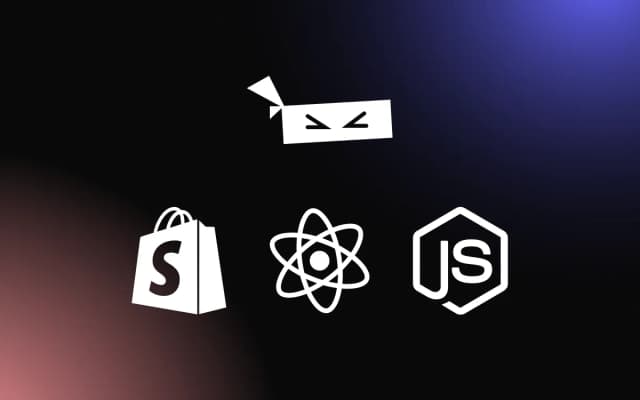
Angular and React are both component-based frameworks that can be used to create virtually any type of front and project. However, there are some important differences between the two that you should be aware of in order to make the right choice for your next project.
Angular is a full-fledged JavaScript framework that uses TypeScript for mobile and web development, whereas React is a library whose framework is only for UI development.
In addition to the difference in purpose, Angular also differs from React in terms of performance, learning curve, and tools. Angular has two-way data binding, uses TypeScript language, and has a real DOM. On the other hand, React has one-way data binding, uses JavaScript XML, and has a virtual DOM.
Another big difference between the two is in the UI components. Angular has integrated material design components, whereas React has a material-UI library and dependencies. Finally, the two frameworks have vastly different learning curves, with React being significantly easier to learn compared to Angular.
Read the rest of this article to discover the similarities and differences between the two, including the benefits, challenges, and best-use examples of each so you can pick the right one for your next project.
What is Angular?

Angular is a web application framework from Google. It’s an open-source platform that helps to create single-page apps using HTML and TypeScript. This is the technology you want when building applications for both web and mobile such as online course software.
Angular is different from other frameworks in that it offers two-way data-binding, meaning that if you were to change any value in the input box, the added property value of the component class will be automatically updated.
In other words, the framework creates a real-time, seamless synchronization of data between the model and view.
New developers in the field may not already be aware of this fact, and may therefore assume that Angular and AngularJS are the same, which they aren’t. At its core, Angular uses TypeScript (a superscript for JavaScript), whereas AngularJS uses JavaScript.
Key Features of Angular
- Large community support
- Built-in support for HTTP, AJAX, and Observables
- Consistent with technology
- Cleaner and crisp coding
- TypeScript offers efficiency
- Enhanced support for error handling
- Forms and validation
- UI and Business Logic Separation
- Seamless updates with Angular CLI
- Shadow DOM/local CSS
What Is React?

React is a JavaScript library for building user interfaces. Developed by a team from Facebook, this library is commonly used to create single-page applications using isolated components.
It supports mobile and web app development as it can handle the view layers of both. It’s a flexible framework that makes it possible to build complex apps when used together with other supporting libraries.
Unlike Angular, which has two-way data-binding, React only has one-way data-binding, which means that its structure flows from parent to child. But, if you want two-way data-binding, React does offer LinkedStateMixin, which you can use to set up a general data-flow loop pattern.
React doesn’t create additional Document Object Models (DOMs) when accepting new updates to data, which is why (unlike the traditional dataflow) you don’t have to reload the entire page to view changes for every new data input when using React.
Key Features of React
- Time-Saving
- Allows you to use third-party libraries
- Simple and composable
- Fast performance for better user experience
- Fully supported by Facebook
- Faster development
- React components
- Code stability with one-directional data binding
Key Similarities and Differences
There are a lot of comparable features in each framework. Both are well-suited for building projects with efficiency under various circumstances. But, they each have a few unique features, as well.
Here’s a closer look at the key similarities and differences between the two:
Key Similarities
- Open-Source: Both Angular and React are open-source, which is why they have large developer communities that regularly enhance the resources.
- Architecture: They have component-based architecture. Components are reusable within other components, which makes them endlessly recyclable.
- Rendering: The two solutions provide extremely efficient client-side and server-side rendering.
- Development Environment: Angular and React are used to develop the front end of a mobile or web application.
- Performance: Angular and React offer similar performance. The difference mostly depends on the user’s perspective.
- Easy to Update: Both platforms offer easy updating. But while Angular uses CLI, its counterpart depends on external libraries.
Key Differences
These two frameworks use component-based architecture, which means they share many similarities.
However, they also differ in a lot of ways.
- Purpose: Angular is a comprehensive framework, whereas React is a library.
- Data Binding: Angular has two-way data binding, React only has one-way data binding.
- Language: Angular uses TypeScript, a superset of JS, while React uses JSX (Javascript XML).
- UI Components: Angular has integrated material design components, whereas React has a material-UI library and dependencies.
- Dependency Injection: Angular supports dependency injection, but React only has a global state for all components.
- DOM: Angular has incremental DOM and React has a virtual DOM.
In addition to the differences outlined above, you’ll also find that Angular and React differ in terms of performance, learning curve, and various other features.
For instance, Angular has a steeper learning curve. There are lots of concepts and syntax you must learn. Conversely, React is significantly easier to learn since the code for the component is in the same file.
With regard to performance, Angular’s “real” DOM and bi-directional data binding process makes it slower than its counterpart.
In terms of tools, Angular doesn’t require additional libraries. It integrates several different functions that can use RxJS and NgRx. On the other hand, React relies more on a state management library for optimized processes.
Benefits and Challenges
Before deciding which is the right solution for you between the two, you need to factor in certain variables, such as budget, time, learning curve, effectiveness, and so on. To give you a better idea, here’s a quick look at some of each framework’s benefits and challenges.
Benefits of Angular
- Compact and Accessible Application Development: One of the biggest benefits of using Angular is that everything happens under one roof. The framework offers an ecosystem that lets you create your applications effortlessly with features like two-way binding, templating, RESTful API modularization, dependency injection, Ajax handling, and many more.
- Long-Term Google Support: Another advantage of using Angular is that Google offers long-term support and is still scaling up the Angular ecosystem. Every Google app you encounter uses this framework, and, as confidence in Angular grows, new developers are finding opportunities to learn from experienced Angular professionals.
- Reduced Coding and Contradiction-Free Environment: With Angular, you’ll be able to spend less time coding so you can create your apps even faster. Compared to other frameworks, TypeScript identifies errors efficiently and eliminates them in earlier phases of the development cycle.
This way, you don’t have to worry about whether or not something is a service, component, or another code type. Everything is organized into neat, relevant boxes that are then introduced as modules that make it easy for you to structure your app’s functionality.
Benefits of React
Here are some of the benefits of using React:
- Exceedingly Lightweight: React is extremely lightweight, You can integrate third-party libraries to use during the project development process, and the platform also supports a bi-directional data-binding process.
- Short Learning Curve: Compared to other solutions, it’s faster to learn React and get things started. The client-side and server-side of your application can have similar code, which means any website you build will have high-speed advantages. This makes it attractive to users, crawlers, and developers alike. The website is also easy to test since React treats views as functions of specific states.
- Ongoing Facebook Support: Like Angular, React gets excellent support from its creators. It’s maintained by Facebook, as well as particular communities and groups of individual developers. Because of its exceptional accessibility and usage, it has a broader range of possibilities for new developers who want to learn the framework and quickly become successful app developers.
Challenges of Angular
The following are some disadvantages and issues with utilizing Angular:
- Steep learning curve which can be perplexing for newbies
- Angular features can be confusing for newcomers
- The framework has no clear manual or all-inclusive documentation
- Third-party integration is very difficult
- Angular sometimes becomes slow when there are embedded interactive elements
- You might experience issues when upgrading to newer versions of the software
Challenges of React
Like its counterpart, React also has its own set of drawbacks:
- Complex configuration is required to integrate React into the traditional MVC framework
- ReactJS requires users to have in-depth knowledge of the UI integration into the MVC framework
- Integration of React with an MVC framework like Rail requires a lot of setup
Examples of Where Angular and React are Used Effectively
Both platforms have respective specialties, which make them beneficial to the front-end development field. Their features and flexibility help developers unleash their full potential when creating small- and large-scale apps – although React does seem to be the more preferred option between the two, as shown by the graph below:

Here are some of the ways each framework is used.
Examples of Where Angular is Used Effectively
These days, more and more people are using Angular for their projects. The framework has definitely marked its spot on the list as one of the most popular solutions out there. Because of its diversity, it’s used by a lot of developers and virtually every industry.
Some of the major companies that use Angular include:
- Microsoft
- IBM
- Upwork
- Deutsche Bank
- Samsung
- PayPal
- Forbes
- Rockstar Games
- The Guardian
When to Choose Angular?
Choose Angular if you want a ready-to-use solution that will facilitate higher productivity. It’s the perfect choice when you want a large-scale, feature-rich application like a website builder. If your dev team has experience using Java, C#, or any previous versions of the Angular App, then they’ll find this tool extremely beneficial.
Examples of Where React is Used Effectively
A recent survey shows that over 60% of developers use React. Its creator, Facebook, has one of the largest active user bases in the world and has used React for its mobile app, which has prompted a lot of other big companies to follow, including:
- Yahoo
- Netflix
- New York Times
- Dropbox
- Ubereats
- Atlassian
- Discord
When to Choose to React?
Choose React native framework in cases where you need an app with multiple events. If you or your app development team are experienced in HTML, CSS, or JavaScript, then this is the ideal choice for you.
You’ll find React to be the perfect solution when your project requires a personalized solution. Also, this simple framework is perfect for you if you want to create shareable components within your app project.
Conclusion
Both these technologies have similar purposes. But, they do have some very important differences that you need to understand before making your choice.
Now that you know all the features, benefits, and drawbacks of both Angular and React, you’re better able to choose the solution that is best for you.
Your final choice of whether to use Angular or React for your next project will depend on your purposes more than the functionalities offered by each of these technologies.


